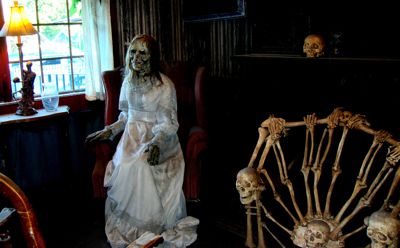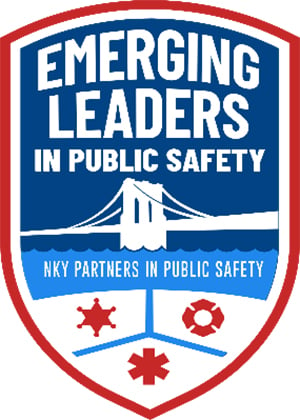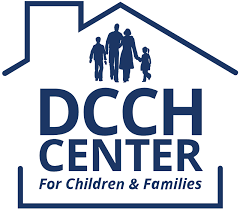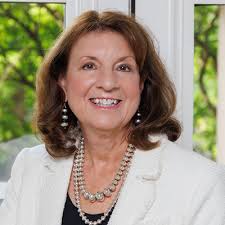
October is a month of change as the fall colors are in full swing, but it also the month when many of us are willing to pay good money to be scared half to death in haunted houses.
Halloween is the second-largest commercial holiday in America as more than $7 billion is spent on candy, costumes and “haunted” activities across the country. Research has shown that people love being scared while in a safe environment and are willing to pay for the experience as for-profits, charities, schools and other nonprofit entities have haunted houses to raise and make money.
Growing up the son of a Lexington Jaycee back in the 1970s, I had the unique privilege of helping decorate a haunted house that sat one block south of Rupp Arena on South Broadway.
I have since visited my share of haunted houses over the years and have walked away injured and battered on many occasions. In addition to the temporary hearing loss, I have battle scars from claw marks from both my daughters digging their nails into my arm as they clung to me while screaming at the top of their lungs.
Halloween should be HARMLESS fun, but even a novice safety professional or insurance geek should realize that any time you mix in low lighting, large crowds, elevational changes, blinding strobe lights, fog, sudden noises and fake blood in a confusing maze – combined with the emotions those evoke — you are at high risk for an accident.
In fact, haunted house accidents injure hundreds of visitors every year.
To be competitive, haunted house operators continue to look for more creative ways to make visitors’ experiences as realistic as possible, often blurring the line between fantasy and reality. Just this year, one haunted trail just outside Lexington has introduced paintball guns into the equation, allowing guest to shoot walking zombies.
But you may be surprised to realize that working in a haunted house is usually more dangerous than visiting one, according to some reports. While many paying guests become overly frightened and faint, run into walls, or trip and fall while trying to escape, there are equally as many injuries to haunted house employees and even an occasional near-death experience.
Haunted and risky
In a haunted house incident in Lincoln County, Missouri, an employee accidentally shot another co-worker when he tripped during a performance and accidentally discharged the 45 caliber gun, striking the other employee in the arm. The bullets were blanks but struck and injured the co-worker.
The more effective these haunted house actors are in scaring the guests, the more likely they are to be bitten, kicked and even punched by the guests. Such a reaction can be a natural response after being startled or when somebody creepy enters your personal space. The problem isn’t the haunted houses or the actors, but the customers and their flight-of-fear reactions.

Broken noses are the most common injury. There are accounts that some people actually visit the haunted houses deliberately to launch verbal taunts and occasionally hard objects at workers, many of whom are teenagers in costumes. There have even been reports of people even trying to set decorations on fire inside a haunted house to amp up the fright for the other guests.
In an upscale Manhattan all-girl private school holding its annual Halloween haunted house for their younger classmates, a 14-year-old girl was kicked in the head by scared fellow students causing a severe injury to her neck and a concussion. Investigations concluded that the episode was the result of “adolescent exuberance.” The students kicked the eighth-grader, who was hiding under a sheet and had grabbed their ankles.
A deadly incident occurred in 1984 when a fire started at 6:35 p.m. at a haunted house attraction at the Six Flags Great Adventure in Jackson Township, New Jersey. About 29 people were in the attraction when the fire began; 14, including four park employees escaped, and seven were treated for smoke inhalation at an area hospital. Unfortunately eight others did not make it out that day. They were trapped and died when the fire spread due to use of flammable building materials.
Safer today, but injuries occur
Haunted houses and attractions today are generally safer thanks to tough safety and fire codes they must live by, as most local municipalities rigorously inspect haunted houses before allowing them to open.
Severe accidents are infrequent, but fire is probably the greatest concern, as most are designed to force traffic into a dark maze throughout the house. Before visiting or working at a haunted house make sure that the building is equipped with adequate number of fire exits with panic alarms, smoke or heat alarms, emergency lightening and fire extinguishers; have no open flames; and use flame resistant materials, props and decorations.
Other injuries can occur when actors with chainsaws, in fake coffins, and playing parts in bloody scenes are among are part of the equation. Frightened patrons often bolt, pushing other visitors out of the way, into walls or props, or onto the ground.
Another source for injuries is all the different props and hardware that are present. Some props become unstable from repeated visitor contact, and small children are especially vulnerable to becoming injured in these settings.
Haunted houses will often pump artificial fog into enclosed confined spaces, and without proper ventilation and filtration, carbon monoxide can quickly climb to a level unsafe for everyone inside.
All employees should be instructed to avoid people’s personal spaces and to never touch a guest especially those who appear to be looking for a confrontation. As a guest, if ever touched inappropriately by one of the actors, you should inform the manager.
Over the years I must admit Jason, Freddie Kruger and Michael Meyers have all left me a bit shell-shocked. I once had to check in my man-card after having to apologize to a high school date after nearly jumping entirely out of my seat and into the next row at the conclusion of the first Friday the 13th movie. As a safety professional all grown up, I simply can’t see the need for anybody to pay good money to be scared half to death in a haunted house. There are enough hazards and dangers in real life without having to face them in an entertainment venue.
Be safe, my friends.
Keven Moore works in risk management services. He has a bachelor’s degree from University of Kentucky, a master’s from Eastern Kentucky University and 25-plus years of experience in the safety and insurance profession. He lives in Lexington with his family and works out of both the Lexington and Northern Kentucky offices. Keven can be reached at kmoore@roeding.com.






















